
Whether you’re trying to keep noise in or out, soundproofing materials are the way to go. Use this guide to see how much it costs to soundproof a room.
Don’t get walled into a space that’s not up to your standards


OSB is more expensive than drywall, costing $32 to $58 per sheet, compared to $15 to $23 per sheet for drywall.
OSB’s durability and flexibility make it suitable for wall sheathing, underlayment, roofs, and siding.
Drywall is lightweight, has a smooth surface, and is easy to install, making it ideal for covering the studs on interior ceilings and walls.
If you’re getting ready for a project that includes putting up new walls, drywall is probably your go-to thought. But there are alternatives to choose from, such as OSB. If you’re contemplating the pros and cons of OSB versus drywall, we’ve put them head to head to help you make your decision.
OSB is an engineered wood, while drywall is made from a mixture of calcium sulfate dihydrate, a.k.a. gypsum. Both are common construction materials and can be used in similar situations. However, the differences definitely make one better than the other in certain applications. We’ll help you determine when and where to use each in your next construction project.
Oriented Strand Board, known simply as OSB, and drywall are made of completely different materials, which affects their function and uses. OSB has some flexibility, making it suitable for subfloors. Drywall, on the other hand, is stiff and rigid and can snap or puncture if put under too much pressure.
Yet, drywall is lighter, easier to cut, and has a smooth surface that’s easy to paint. OSB can splinter and come apart if not cut correctly and has a rough, textured surface that’s hard to make visually attractive.
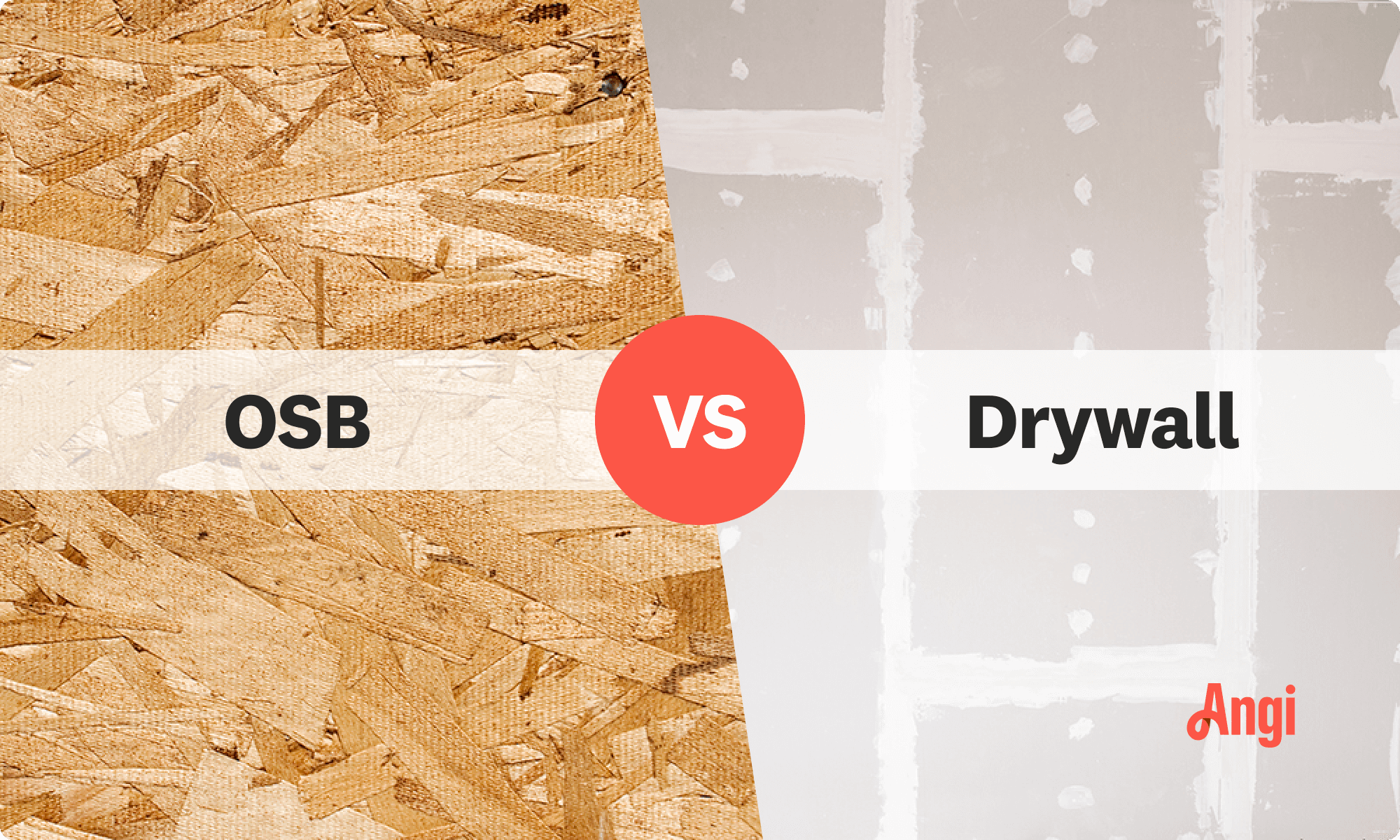
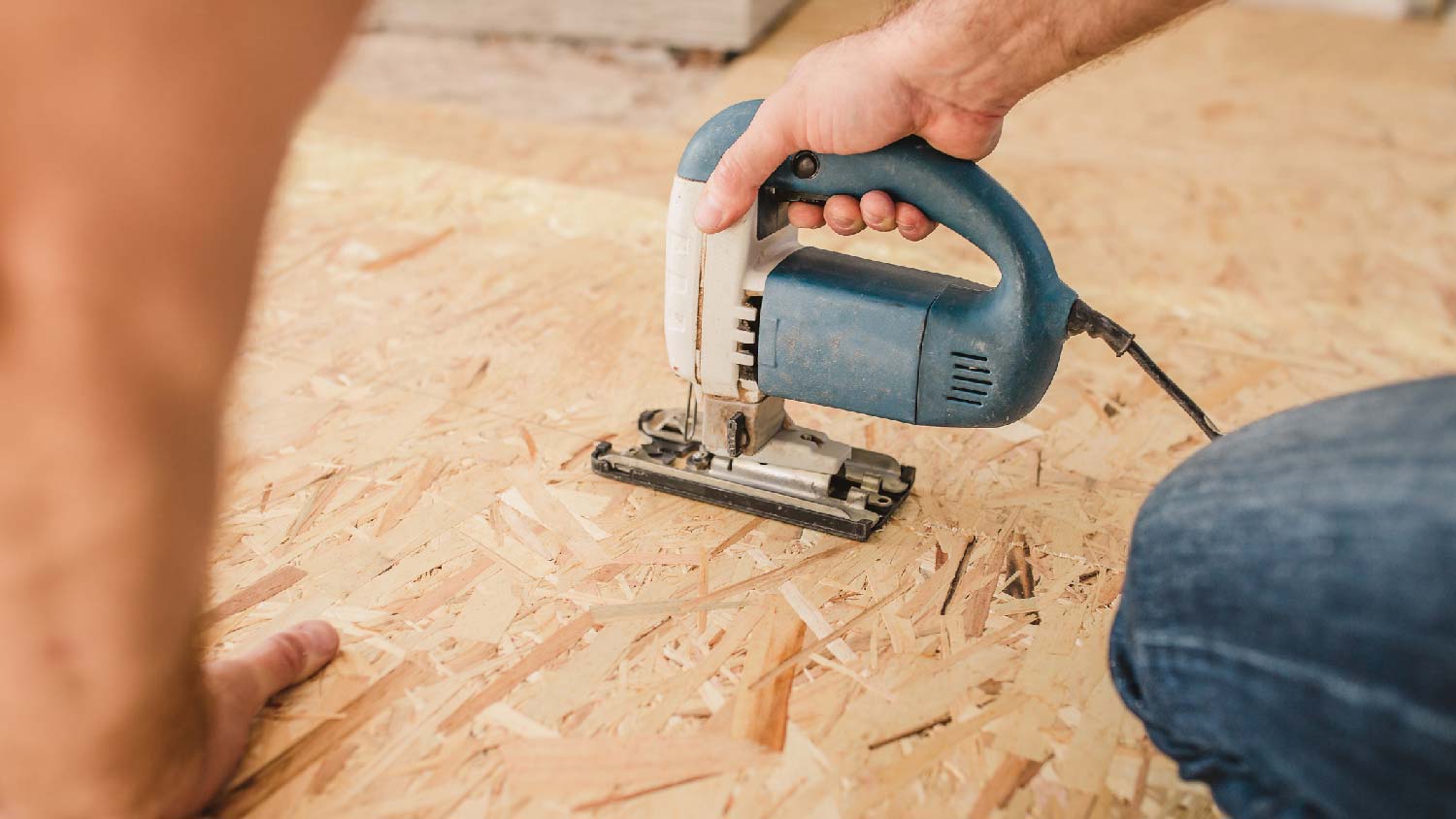
OSB is an engineered wood. Its cross-grain layers of wood are mixed with resins and special adhesives, which are pressed and heated to create the final sheet. The cost of OSB varies by sheet thickness, running from ¼ to ¾ inches thick. Those varying thicknesses make it suitable for siding, floor underlayment, wall sheathing, and roofing.
| Pros | Cons |
|---|---|
| Flexible | Heavy |
| Highly durable | Difficult to cut or paint |
| Wide range of thicknesses | Susceptible to pests |
Best for:
Subflooring under lighter flooring materials
Exterior or interior sheathing
Roofs
Siding
OSB’s strength allows it to bear more weight for roofing and siding. At the same time, it’s flexible enough for use in underlayment. However, its flexibility makes it better under lightweight flooring options like carpet rather than heavier materials like stone tile.
OSB can last for decades if it’s properly maintained. It can also add strength to a building's structural stability. Lastly, it comes in a wide range of thicknesses, making it usable for interior and exterior construction projects.
One of the main cons is that OSB is heavy. A single sheet typically requires two people to safely move. This material can also be difficult to cut, easily sheering and creating rough edges. While you can use it for interior walls, it’s much harder to make the surface of OSB look attractive. It also requires sheathing tape between sheets to prevent water damage at the edges.
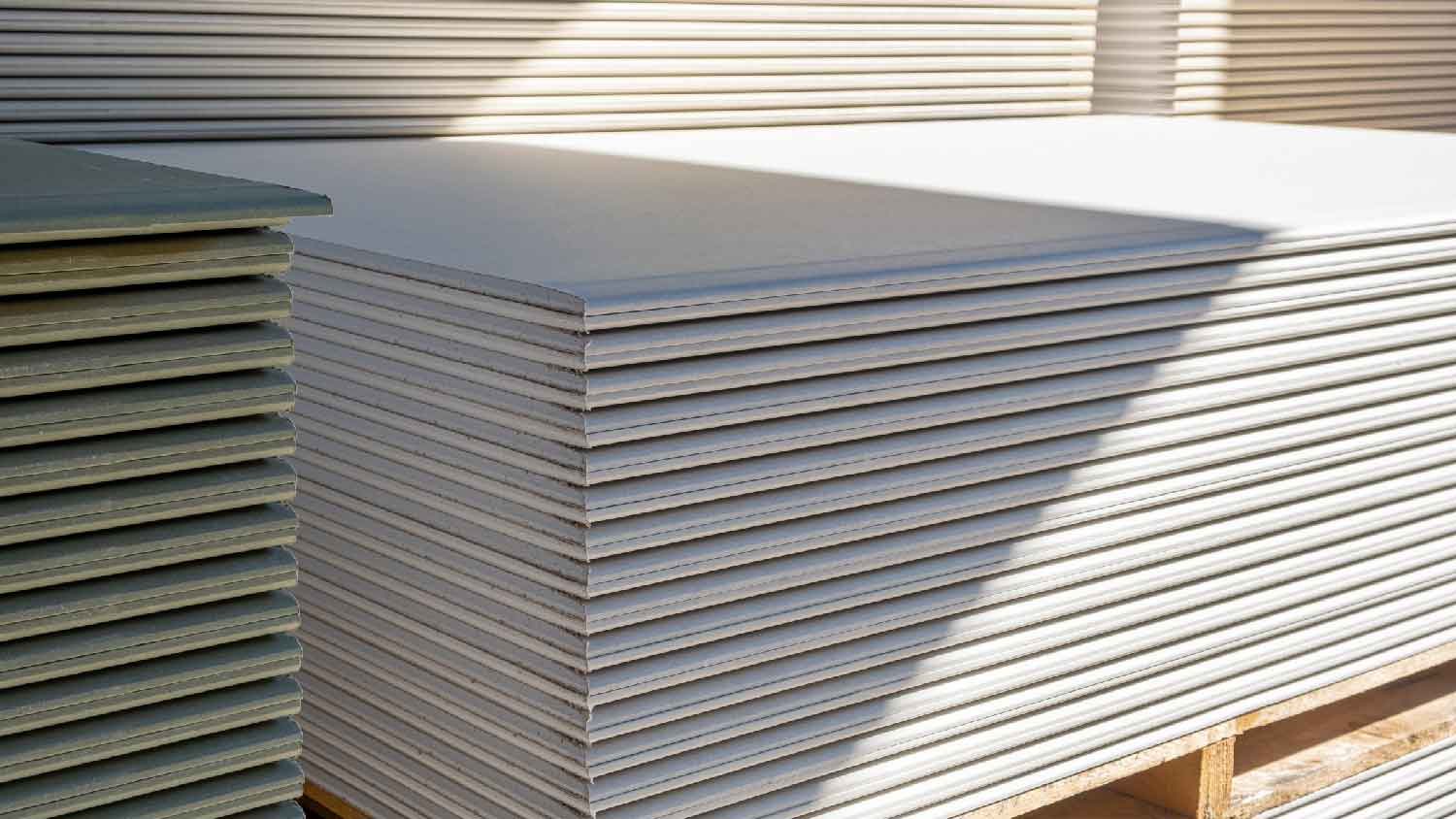
Drywall is made of gypsum plaster hardened between sheets of facer and backer paper. It’s relatively lightweight and used to cover wall studs on interior ceilings and walls. This material can be found in all interior spaces, though you can find drywall alternatives for garages and other specific areas. Drywall comes in different thicknesses, with the thickest being 5/8 inch. The cost of drywall installation varies by the sheet thickness, type of drywall (there are soundproof, fire-resistant, and mold-resistant varieties), and final finish.
| Pros | Cons |
|---|---|
| Lightweight and easy to work with | Easily damaged |
| Can be painted and textured for design effect | Limited load-bearing |
| Mold-resistant, water-resistant, and soundproof varieties | Not ideal for humid environments |
Best for:
Interior walls and ceilings
In comparison to alternative interior wall materials, drywall is relatively lightweight, making it easier for local drywall contractors to install. An experienced installer can probably move and place a sheet without help. Drywall’s rigid structure makes it easy to cut along a straight edge for quicker placement on the wall or ceiling.
The smooth surface of drywall’s facer paper readily adheres to primers and paints, so you can achieve different design aesthetics. Drywall also offers natural pest resistance because it’s not made of wood or other materials that attract unwanted visitors. Finally, drywall is made in different varieties for use in specific rooms. For example, mold- and water-resistant drywall can offer better durability in a bathroom.
That same rigid structure that makes drywall easy to cut and install also makes it easy to damage. Something (or someone) falling into the wall during or (after) installation can cause cracks or punctures to the surface. While you can repair the surface, you have to be careful even when installing a picture frame.
Drywall is too rigid and fragile to support a lot of weight. Consequently, it doesn’t strengthen the building's structure. Drywall is primarily an attractive, durable finish for interiors, so it doesn’t offer versatile uses as some other construction materials can. And while water-resistant varieties do exist, standard drywall isn’t ideal for very humid environments.
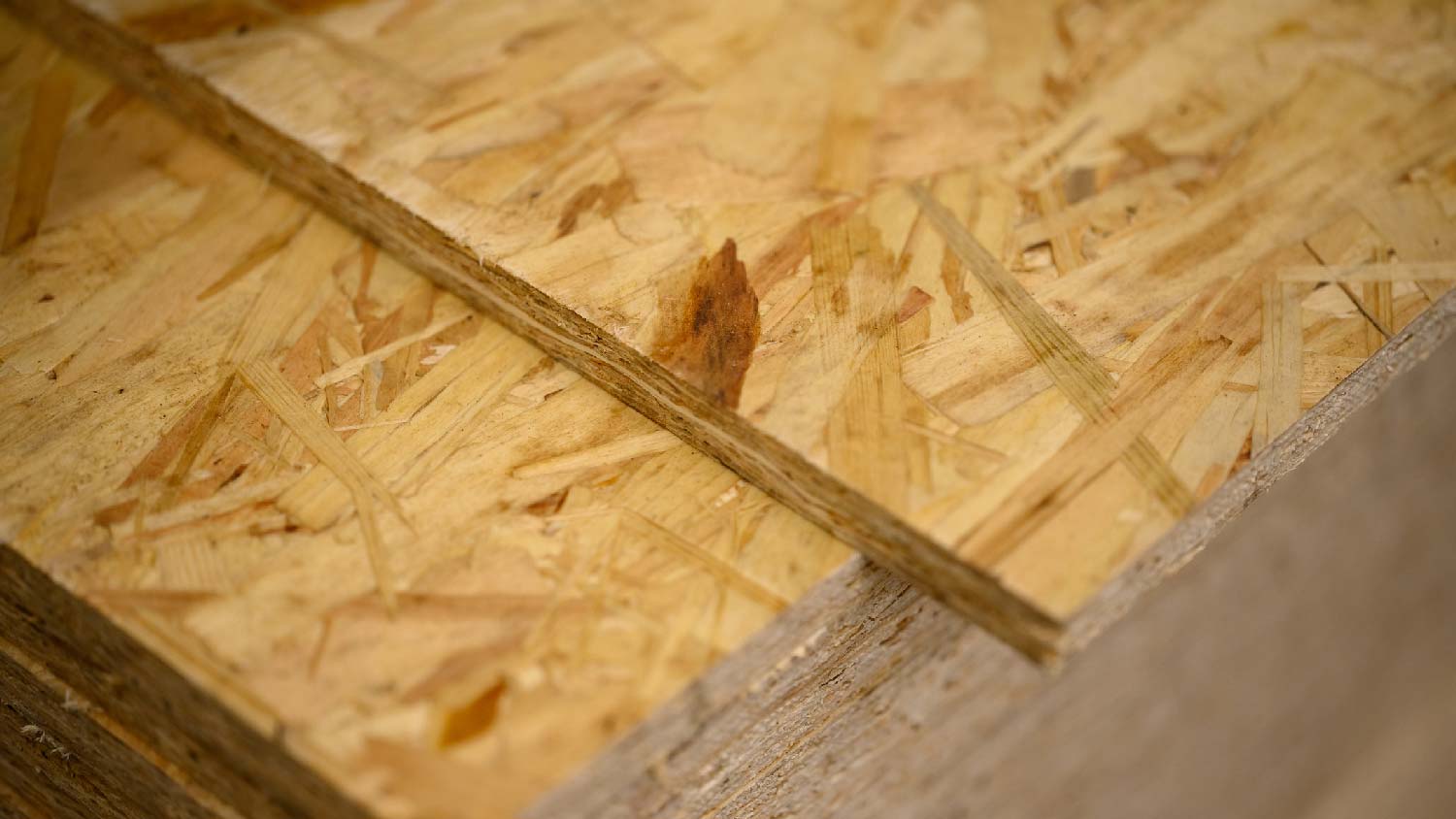
These two materials have a few similarities, but ultimately, they’re best for different purposes. If you’re trying to decide between the two, it’s time to compare OSB and drywall more closely.
OSB’s textured, uneven surface doesn’t lend itself to paint or a sleek finish. Drywall, on the other hand, can be textured and painted to fit a wide range of styles. It’s an easy winner when it comes to the final appearance.
Both OSB and drywall offer excellent durability, making them popular building materials. However, OSB edges out drywall thanks to its structural strength and the durability it offers buildings.
OSB is more expensive than drywall, costing about $32 to $58 per sheet. Because drywall is less durable than OSB, that’s often reflected in the price, which is $15 to $23 per sheet. You’ll likely see that price go up, though, as you increase in material thickness and if you choose a moisture-resistant or soundproof type.
Drywall is easier to cut and lightweight, making it quicker to install. OSB is heavy enough that you’ll need two people to carry a sheet. Additionally, it can be finicky when cutting, so it’s easier to break or shatter if not cut carefully.
Replacing OSB requires removing the material on top of it and the entire panel, which can include using a circular saw. You may also have to seal the ends of the OSB to protect it from water. You can patch holes of most sizes in drywall. For large holes, you can cut out the damaged area and fill it in with a piece of new drywall.
OSB comes in a wider range of thicknesses than drywall. Plus its durability and flexibility make it useful in many applications. In short, if you have extra OSB left over from a project, chances are you can use it in another project. If you have leftover drywall, you can’t really use it on exteriors or to build shelves like you can with OSB.
Cancelled appointment two hours after they were supposed to come for drywall work.
Window Depot did an amazing job on my deck. I wasnt sure what I wanted to do, but their composite decking was affordable and will last a long time. I am excited to have family over, and I am no longer embarrassed by my backyard. Jeff and the ground crew were polite, respectful, and caring for...
We used Unique Hardwood Floor LLC three years ago to work on the floors of a 70 year old home that needed a great deal of work. Some floors needed repairs, some were replaced and others just needed to be refinished. It was a complicated job as they needed to blend the old and the new to...
Involved an extensive bathroom remodel, including removing tub & installing walk in shower, new drywall, custome tile work to ceiling, plumbing, etc. Overall, job was done on time and on budget. Nick & his team were very professional and had high attention to detail. Quality was great. Highly...
Mr. Lopez was super nice and professional. He repaired our drywall just as he described during the estimate phase. Our dining room wall looks great again! Thanks Mr. Lopez!
Fred and his partner did an excellent job and they finished in two days. They replaced the drywall and it is flawless. Fred's workmanship is top notch. Fred is also practical and reliable. He also does hardscaping and can do other types of home improvement projects.
I was delighted with SemBro. The kitchen designer (Nadia) created a design that was both very attractive and functional, including some features that we had not ourselves imagined (e.g., corner cabinets). The design far exceeded what another company had generated. After we visited the...
They did really extensive work and did an amazing job. It took about six months altogether, but they did a very good job for our waterworks. Our neighborhood has a lot of older houses that have a kind of like a low basement, and ours was unfinished, and won't do with semi-finished and not in...
I've been around the block myself many times and know most of the lingo, angles, tricks and traps of contracting work on a home. And, I've taken the community school contracting licensing classes and heard contractors discuss openly and candidly trade practices and tales both good and bad. ...
Excellent work; great attention to detail; makes good suggestions but always goes along with what the customer requests; clean and tidy; intelligent; very reasonable rates. I would definitely hire him again for other home projects. He can do a variety of different jobs including: drywall,...
From average costs to expert advice, get all the answers you need to get your job done.

Whether you’re trying to keep noise in or out, soundproofing materials are the way to go. Use this guide to see how much it costs to soundproof a room.

Pre-drywall inspection costs vary depending on the home size, build complexity, and reporting you receive. Estimate your budget with this cost guide.

Drywall texture can create an attractive finish and add dimension to your home’s walls. This guide breaks down the factors that influence the cost to texture drywall.

With a drywall repair kit, you can fix small holes in an hour or so. Ready to get started? Here’s how to patch a hole in drywall in 10 easy steps.

Your drywall reeks, and you’re not sure why. Learn why your drywall smells like poop, and what to do about it.
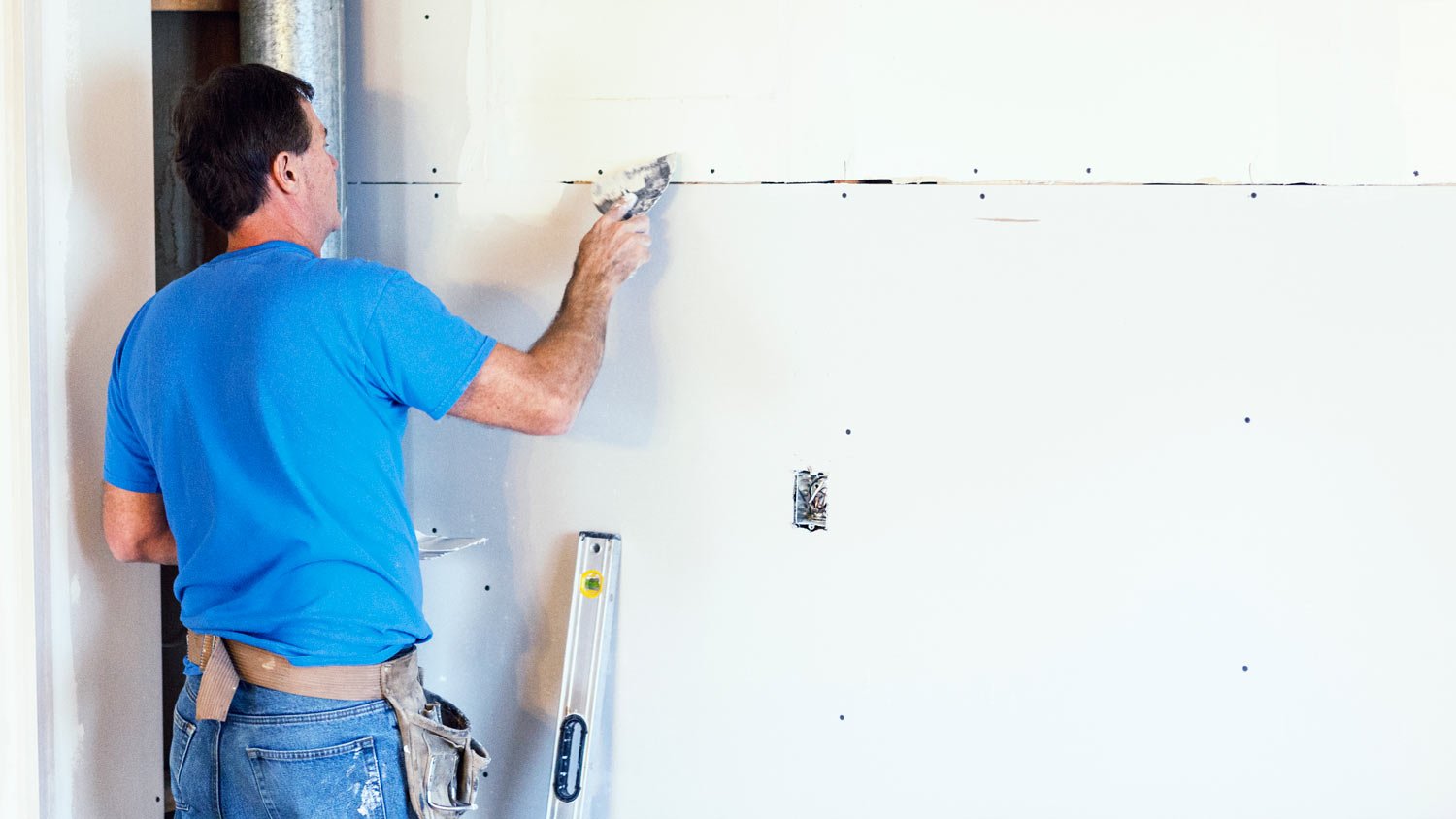
Thick gaps and extra joint compound can alter the look of drywall. So, should drywall be butt up against a wall? Review this guide for seamless installation.